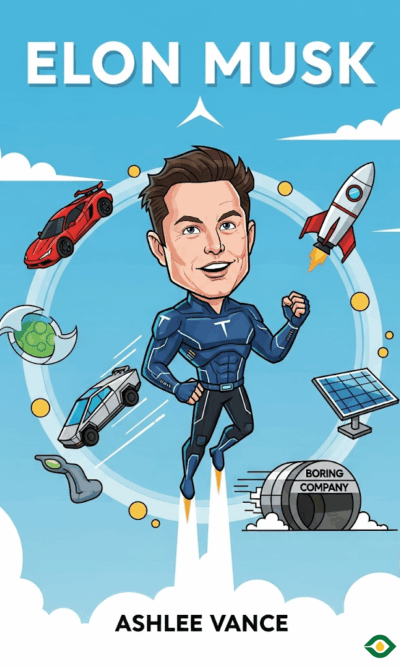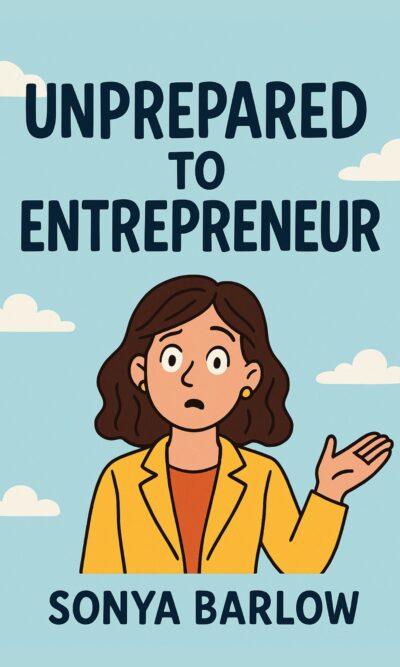Description
Starting a million-dollar business may sound like a faraway dream, but it is not as impossible as it seems. Many people believe you need years of experience, endless resources, or pure luck. The truth is, with the right mindset, clear steps, and consistent effort, you can create a thriving business in just twelve months. It begins with understanding that business is not about fancy products or clever tricks. It’s about solving real problems for real people, staying persistent when it feels tough, and taking each step with focus.
The first step is identifying a problem worth solving. Every great business begins with a need. Think about your own daily frustrations—because chances are, others face them too. If something bothers you, it might also bother thousands of others, and that is the seed of a business idea. Solving a problem you care about makes you more committed. This passion is important, because starting a business takes energy, sacrifice, and time. Without strong personal motivation, it’s easy to give up when things get hard.
An inspiring example is Suzy Batiz, who faced bankruptcy more than once before creating her breakthrough idea. She noticed the awkward problem of bathroom odors and worked tirelessly to find a solution. What she made was simple yet powerful—a spray that people loved and trusted. Her story shows that you don’t need to invent something complicated. You only need to clearly see who has the problem and how you can serve them. Her focus wasn’t just on her product, but on the people who would benefit from it.
This leads to an important lesson: businesses are built for people, not products. Too many entrepreneurs fall in love with their idea and forget to ask who will actually use it. The most successful businesses understand their customers deeply. They know their worries, habits, and desires. When you put people at the center of your decisions, everything else flows naturally. Sales become easier, customers remain loyal, and your business develops a true identity.
Once you have an idea, the next step is to prove it works. This means testing, improving, and making sure people are willing to pay for it. A lot of entrepreneurs try to skip this stage, rushing ahead to fancy branding or complicated websites. But if your product doesn’t solve a clear need, none of that will matter. Real validation comes when people take out their wallets and buy. That’s the most honest feedback you can receive.
Of course, starting requires money. But funding doesn’t have to mean huge loans or big investors. Many businesses begin by self-funding: selling early versions, reinvesting profits, and growing step by step. This is a safe and smart approach, because it forces you to manage money wisely. More sales do not always mean more profit. You must find the right balance between price, volume, and costs.
Another way to raise money is through outside support, such as crowdfunding. Platforms like Kickstarter allow you to raise funds while also building excitement around your product. This not only helps with money but also with creating an early community of loyal buyers. Whether you use personal savings, reinvestment, or outside help, the key is to treat every dollar carefully.
After securing funding, the next big milestone is the product launch. A strong launch doesn’t just happen overnight. It requires months of preparation, storytelling, and building relationships. Think of your launch as a show—you want the audience ready and waiting before the curtain rises. One powerful strategy is to involve people in your journey. Share updates, behind-the-scenes stories, and early prototypes. When your product finally arrives, people will feel like they helped build it. They will be excited to buy, not just curious.
Now comes growth. Selling one product may be enough to get started, but to reach the million-dollar mark, you will likely need more. Scaling means expanding without losing quality or focus. Some entrepreneurs rush into creating multiple products too quickly. But the best approach is to grow carefully, one step at a time. Start with one strong product, then build on its success.
A perfect example is Aubrey Marcus, who launched a brain supplement called Alpha Brain. He gained trust by making a quality product and connecting with the right people. From there, he expanded his company, Onnit, into a full health and fitness brand. The lesson here is not to chase endless new ideas, but to build from a strong base. Each new product should serve your existing customers better, not distract from them.
Scaling also means listening closely to your customers. Their feedback guides you toward improvements and opportunities. Many successful entrepreneurs found growth by addressing specific groups that larger companies ignored. CozyPhones, for example, became popular because the founder noticed a need for comfortable headphones for kids and people with special sensitivities. By focusing on these niches, he created loyal fans and then expanded naturally.
Eventually, your business will reach a major crossroad: do you continue scaling, or do you sell? Both options have benefits. Scaling allows you to build an even larger company, hire teams, and expand into new markets. Selling, on the other hand, can give you financial freedom and the chance to start something new. The choice depends on your personal goals. Some people want to grow forever, while others prefer to cash out and enjoy the rewards. Neither path is wrong—it’s about what brings you satisfaction.
But no matter which path you choose, it’s important to remember that money alone doesn’t equal happiness. Many entrepreneurs achieve financial success but feel empty because they ignored their personal lives, health, or sense of purpose. True success is a balance. A million-dollar business is wonderful, but it should not cost you your peace of mind. The smartest entrepreneurs focus on building not just wealth, but a life that feels meaningful.
To sum it up, the journey to building a million-dollar business in twelve months is not about shortcuts or luck. It’s about consistent steps: find a problem that matters, focus on the people you serve, fund your project wisely, prepare a strong launch, grow through customer trust, and make careful decisions about scaling or selling. The process requires sacrifice, resilience, and patience, but it also brings freedom, independence, and pride. With the right mindset, anyone can walk this path.
The big picture is simple: business success is not about being a genius, or having a unique invention. It is about solving real problems, serving people well, and showing up every day with persistence. Do that for twelve months, and you might just find yourself with not only a million-dollar company, but also a new perspective on what it means to build something that truly lasts.





